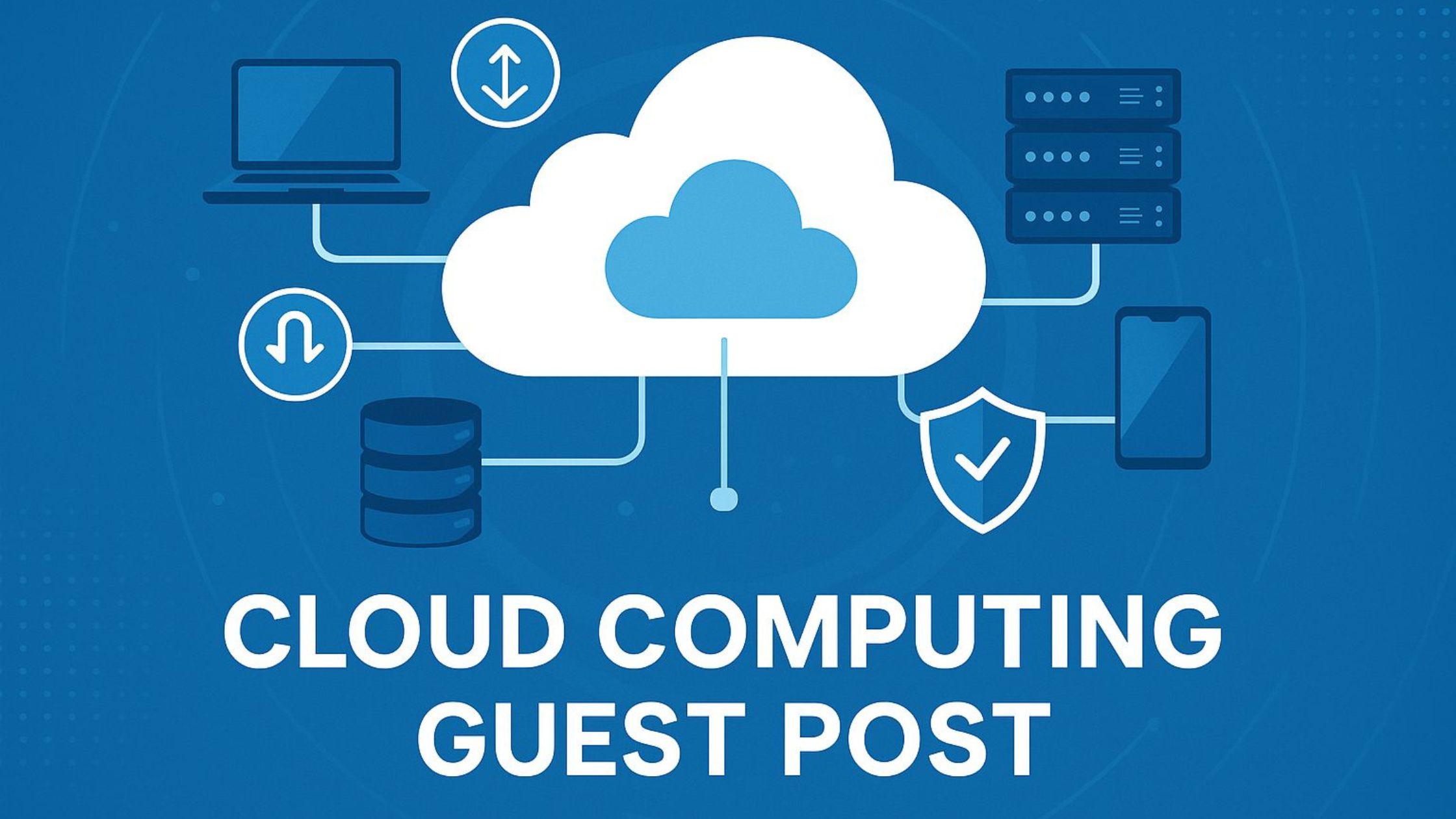



When I first started consulting in SEO (more than a decade ago now), I remember pitching guest posting as a key tactic. For some clients, it was a game-changer. Fast-forward to today guest posting still pays dividends, especially for niche B2B verticals like cloud software and SaaS. But the rules have evolved. You can’t just drop links willy-nilly; you need strategy, relevance, and authenticity.
In this article, I’ll walk through how a cloud software company (or SaaS brand) can build a smart guest posting program: where to pitch, how to craft content, how to measure success, and what mistakes to avoid.
Let’s begin with why, because many smarter moves in SEO start with clear intent. Guest posting (when done right) offers three core benefits for cloud software companies:
Topical authority & niche relevance
When your brand is linked from other cloud / SaaS / technology sites, Google sees you as part of that ecosystem. Over time, that reinforces your domain’s authority in that niche.
Targeted referral traffic
In contrast to mass-volume link tactics, guest posts placed on cloud / dev / tech blogs bring readers who already care about cloud, software, or SaaS. Those leads are more qualified.
Brand awareness & credibility
Being published on respected technology blogs or cloud-computing sites gives your brand external validation. That helps in sales conversations, PR, and trust-building with potential customers.
Of course, this only works if your content is high quality, genuinely helpful, and not obviously self-promotional. That’s the tricky part.
“You can’t treat guest posting like billboard advertising it has to be a value exchange.”
The biggest mistake I see clients make is going after any site that will take them. Those low-quality placements can even hurt you. Here’s a better approach:
A link from a moderately trafficked cloud-computing blog is worth more (for your core audience) than one from a general blog with high domain authority but no alignment to your niche. Use tools like Ahrefs, Moz, or SEMrush to check how much traffic a site gets for cloud / software keywords.
For instance, Linkio curates “cloud computing guest posting sites” that specifically align with cloud technology themes.
There are resources listing SaaS or software blogs that accept guest posts. For example:
100 SaaS Blogs That Accept Guest Posts is a curated list to explore relevant targets.
Top 40+ Software Development Guest Posting Sites similarly helps you filter to the tech space.
Using these lists gives you a starting point, but you should vet each site individually (traffic, relevance, link profile, audience).
Search queries like:
“write for us” + “cloud computing”
"guest post" + "SaaS"
"contribute" + "cloud software"
…will often uncover tech blogs open to contributions. DesignsValley, for example, has a “Write for Us on Cloud Computing” page.
Rikkeisoft also has guest post guidelines focused on cloud, software, etc.
Look at where your cloud software competitors, partners, or thought leaders publish guest content. Use backlink tools to see which sites are linking to them. If they’re accepted there, you might be able to too.
Getting accepted is part art, part science. Here’s a pitch process I’ve refined over the years:
Avoid boilerplate. Start by referencing a recent post on their site, mention something you liked or a point you disagree with. Show you’re familiar with their content and audience.
Don’t just say “I want to write about cloud security.” Instead:
“How micro-segmentation reduces lateral breach risk in hybrid cloud environments”
“A 2025 playbook: migrating legacy on-prem systems to cloud-native stacks”
“Case study: how [Your Company] improved multi-tenant scaling by 4×”
Add brief bullets for what each section might include. This demonstrates thought, not improvisation.
Include 1–2 previous guest posts (ideally in tech) with links, or examples of your writing. If your company has done interesting research, mention it. Maintain a simple author bio.
Some sites allow do-follow links, some don’t. State your preference, but be open to negotiation. E.g.:
“I’d appreciate one or two contextual, relevant links to non-promotional content (e.g. our blog or research). But happy to align with your linking policy.”
If the editor asks for a shorter post, a different angle, or wants more editing comply as long as you're comfortable. The relationships matter.
This is where many people slip into formulaic or promotional writing. Here’s what actually works:
Readers don’t care about your product (yet). Start with a real problem your target readers have in cloud architecture, scalability, migration, cost optimization, etc. Make them feel “yes, this is worth my time.”
General advice (“use caching,” “auto-scale”) is fine, but it won’t set you apart. The best guest posts dive deep — include code snippets, diagrams, architecture patterns, or benchmarks.
For example, a post on “how we scaled database writes in a multi-region cloud setup” is much more compelling than “use database replication.”
If you’re going to include links to your site or apps, make sure they're genuinely useful and contextually relevant. For instance:
“We documented our mechanism for linear backoff retries here (blog link).”
Not:
“Use our product, which is best, click here.”
Also, don’t force multiple brand-name links. A few well-placed ones are enough.
Some blogs have style guides (tone, format, image size). Respect those. Use subheaders, short paragraphs, bullets, visuals. Make your post easy to skim.
Include a sentence or two of credentials (“I’ve helped scale XYZ SaaS infrastructure to serve 20M users”) plus a non-promotional link to your site or social profile.
To jump-start your brainstorm, here are some angles that tend to attract interest:
“Why multi-cloud is no longer optional and how to avoid the trap of cloud sprawl”
“A deep dive into serverless bottlenecks: lessons from real production systems”
“How we built a zero-downtime migration from monolith to microservices in 6 months”
“Cost optimization strategies that cut your cloud bill by 20–40%”
“Security patterns for cloud-native apps in regulated industries (e.g. healthtech)”
“Disaster recovery for SaaS: replicating data between regions without consistency loss”
“Using AI/ML for auto-scaling predictions in cloud infrastructure”
A guest post is only as useful as the results it drives. Here are key metrics to track:
| Metric | Why It Matters | Target / Benchmark |
|---|---|---|
| Referral traffic | Did readers click through? | A few hundred visits is a win in niche B2B |
| Time on page / engagement | Shows whether your content resonated | Above site average |
| Leads / signups | Direct sales or inquiry value | Even 1–2 leads per high-intent guest post is valuable |
| Link value (SEO metrics) | Domain rating, DR, spam score, anchor metrics | Clean, relevant, authoritative links |
| Social shares / comments | Amplification & engagement | Bonus visibility in your network |
Set expectations: not every guest post will be a home run. But over a dozen well-targeted ones, you’ll see compounding benefits.
Here are mistakes I’ve seen, and how to sidestep them:
Writing thin, generic content
Avoid superficial posts. Try to include case studies, original insight, or examples.
Guest posting on loosely related blogs for “link juice”
Relevance matters. A “write-for-us” cooking blog won’t help your cloud software brand.
Over-optimizing anchor text
Don’t force “best cloud software” everywhere. Use natural, branded, and long-tail anchors.
Not building relationships
Don’t treat editors as one-time transactions. Nurture repeat opportunities.
Forgetting to repurpose or amplify
Once published, amplify via your channels (LinkedIn, mailing list) and repurpose (infographics, snippets) to extend reach.
Plex, a manufacturing software company, published a guest post titled “The Turning Tide of Acceptance for Cloud ERP in Manufacturing.” Plex
What they did well:
They focused on a niche industry (manufacturing) rather than generic cloud talk.
They shared observations and even data points from industry events.
They built credibility by positioning as thought leadership, not a sales pitch.
This shows that niche + insight + relevance wins.
Here’s a sample timeline you could follow:
| Month | Focus | Goals |
|---|---|---|
| Month 1 | Research & Outreach | Compile 20–30 potential guest sites. Craft personalized pitches. |
| Month 2 | Pitching & Content Creation | Get 5–10 acceptances. Write 3–5 drafts. |
| Month 3 | Publishing & Amplification | Publish posts. Promote them. Track referral traffic. |
| Month 4 | Evaluate & Scale | Analyze performance, double down on good channels, and refine your topics. |
Repeat this cycle every quarter.
Guest posting remains a high-leverage channel for cloud software / SaaS brands when done thoughtfully.
Prioritize niche relevance and quality over volume or sheer domain authority.
Personalize your outreach, propose thoughtful topics, and demonstrate credibility.
Craft content with depth, real examples, and natural linking.
Track metrics (traffic, leads, link quality) and iterate.
Build relationships with editors for repeat opportunities.
If you'd like, I can help you brainstorm 5–10 guest post topic ideas tailored for your specific cloud product, or help you find a list of suitable blogs in your niche. Would you like me to do that?
1. Is guest posting still effective in 2025?
Yes though not the same as a decade ago. The SEO value of low-quality, unrelated guest posts has declined. But high-quality, niche-aligned guest placements still offer authority, traffic, and branding benefits.
2. How many guest posts should a cloud software brand publish?
Rather than setting a number, aim for consistency and quality. Even 4–6 strong guest posts per quarter can move the needle.
3. Should I always ask for a do-follow link?
It depends on the site’s policy. If they allow, yes. But some high-authority blogs only allow no-follow or unlinked mentions those can still provide referral traffic and brand exposure.
4. How long should a guest post be?
Typically 1,500 to 2,500 words is solid for in-depth topics. Some guidelines may allow shorter (1,200+). Follow the host site's guidelines.
5. What if the editor wants to heavily edit my post?
Clarify early how much editing is acceptable. For major content changes, ask to review final edits. But minor edits for clarity or style are normal.
6. Can I republish a guest post on my blog later?
Only with the host’s permission (and preferably a canonical link pointing to their published version). Repurposing sections (summaries, excerpts) is safer.
7. How do I ensure my guest post drives leads, not just traffic?
Include one or two contextual calls to action (not hard sells). Use gated content e.g. “Download the architecture blueprint” but balance that with value in the free post.
8. What’s the ideal anchor-text strategy?
Use a mix: branded references ("YourCompany blog"), long-tail phrases ("scaling multi-tenant SaaS apps"), and occasional short keyword anchors but never force it.
9. How do I find high-quality guest post blogs in other languages/regions?
Use native-language search queries (e.g. “escribir para nosotros SaaS” in Spanish), explore regional tech publications, and monitor backlinks of local competitors.
10. How long before I see results from guest posting?
Traffic impact can begin in days to weeks. SEO authority and ranking impact often take 2–3 months or more. Think of it as a medium-term investment.
Provide clear contact information, including phone number, email, and address.

Learn how cloud software brands can use guest posting to build authority, drive targeted traffic, and strengthen SEO — with practical strategies and examples.
Read More
“Learn how to secure and write cloud computing guest posts that drive authority, traffic, and trust — with tips, examples, and pitfalls to avoid.”
Read More
Discover trusted guest posting services in the UK, how to evaluate them, and which providers offer real results without risky shortcuts.
Read More

Effective SEO strategies not only elevate a website's visibility but also drive targeted traffic, enhance user experience
All Right Reserved @ 2004 - 2025
